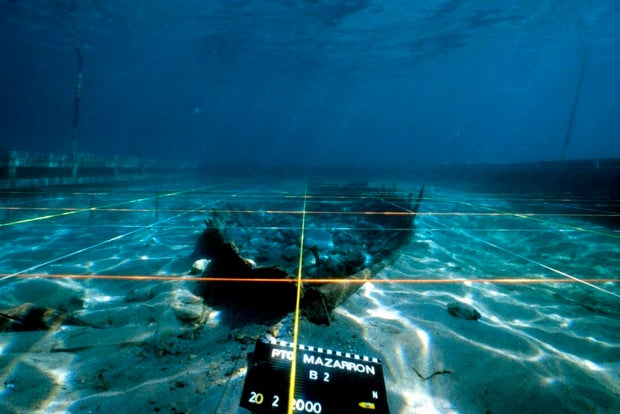Ancient shipwreck dating back at least 2,600 years is raised from waters off Spain
Spanish archaeologists have successfully recovered a 2,600-year-old shipwreck off the country’s southeastern coast, officials said, 20 years after the ruins were first discovered.
The ancient Phoenician shipwreck, which dates back to the 7th century BC, was discovered in 1994 near the town of Mazarron, off the coast of Murcia in southeastern Spain. according to Spanish Ministry of Culture.
The wreck, now known as the Mazarron II, is one of two in the same area. The first, called “Mazarrón I”, was originally discovered in 1993, fished out of the water in June 1995 and, after years of conservation treatment, put on display at Spain’s National Museum of Underwater Archeology in 2005. museum says.
Spanish National Museum of Underwater Archeology
The Mazarron 2 is of particular interest to archaeologists and researchers because it is one of the few Phoenician-era shipwrecks left largely intact, said excavation project leader Carlos de Juan. in video Shared by the University of Valencia. The university conducted the excavations in collaboration with the Murcia Region’s Ministry of Culture.
A team of 14 experts worked with de Juan to raise the wreck from the sea in less than two months, a project that began on September 13 and ended on November 7. Video shows divers carrying wooden fragments of the wreck to the surface.
Phoenicia It was an ancient civilization along the eastern Mediterranean coast, located in modern-day Lebanon, Syria, and Israel, and existed from about 1500 BC to 300 BC. The Phoenicians once prospered Many traces of civilization were thought to have disappeared until the 20th century, as trade expanded and an alphabet was developed that laid the foundation for those later produced by ancient Greece and Rome.
Artifacts like Mazaron II can help shed light on Phoenician culture, de Juan said. In comments to the University of Valencia, he noted that despite a wealth of information about the ships built by the ancient Greeks around the Mediterranean, even now little is known about Phoenician naval construction.
“So this shipwreck makes a very important contribution to this field of research,” DeJuan said. He notes that elements of Mazarrón II are similar to architectural designs in surrounding regional cultures, but some of them are unique and mysterious, at least for now.
Each piece of the wreck was transferred to the laboratory of the Museum of Underwater Archeology in Southern Spain. The lab will work diligently to preserve his remains, a process that could take several years.



